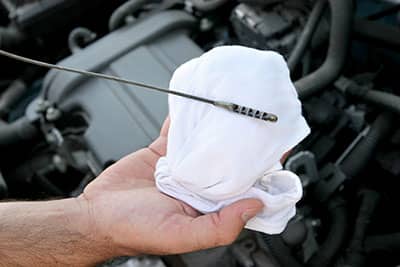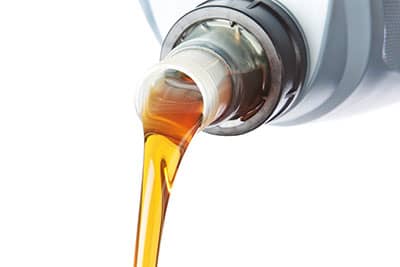Oil Change
Expert Repairs at Your Convenience, Not Ours
Get A Free Quote

Professional Oil Change in New Orleans
Keeping your car’s engine healthy starts with regular oil changes, and at Mobile Mechanic Pros of New Orleans, we make the process easy and convenient. Your engine relies on clean oil to keep everything running smoothly, reduce wear and tear, and maintain fuel efficiency.
But let’s be honest—finding time to sit at a shop for an oil change isn’t always easy. Also, you may perform it yourself, but a professional oil change is always advisable to ensure the best results. That’s what we do best! Our professional mobile oil change service comes to you at home, work, or anywhere in New Orleans, saving you time and hassle.
Signs and Symptoms You Need Oil Change Services
Check Engine or Oil Change Light
One of the most obvious signs is when your dashboard’s oil change or check engine light comes on. Modern cars have sensors that monitor oil levels and quality, and when the oil gets too low or dirty, it triggers a warning light.
Dark or Dirty Oil
Fresh oil is amber in color and clear. Over time, it becomes darker and filled with debris as it circulates through your engine. If you check your dipstick and see that the oil is dark or gritty, it’s time for an oil change.
Loud Engine Noises or Knocking
Oil lubricates the moving parts of your engine. If the oil is old or too low, you might hear grinding, knocking, or louder-than-usual engine noise because parts aren’t getting enough lubrication.
Exhaust Smoke
If you notice smoke (not just vapor) coming from your exhaust, it could be a sign that your oil has become dirty or your engine has an oil leak.
Poor Fuel Economy
Old, dirty oil causes your engine to work harder, reducing efficiency and lowering gas mileage. If you’re noticing frequent trips to the gas pump, it might be time to change your oil.
Oil Smell Inside the Car
If you smell burning oil inside your car, it’s likely that there’s an oil leak. This could mean your oil is running low or your engine is overheating due to a lack of lubrication.
Excessive Mileage Between Oil Changes
Even if you don’t notice any of the above symptoms, it’s important to change your oil based on your vehicle’s recommended interval, usually every 5,000 to 7,500 miles for modern cars using synthetic oil. If it’s been a while since your last oil change, don’t wait for problems to arise!
Why Oils Break Down?
Oil breaks down over time and loses its effectiveness for several reasons. First, as your engine runs, oil is exposed to high temperatures and pressure, which causes it to break down chemically. Second, debris from the engine, such as dirt and metal particles, gets into the oil, creating a sludge-like mixture that reduces its ability to lubricate properly.
Other factors, such as extreme weather conditions, frequent short trips, or stop-and-go driving in traffic, can also contribute to oil breakdown. That’s why regular oil changes are crucial in maintaining your car’s performance and longevity.
How to Check Your Oil Yourself
Step 1: Park on Level Ground and Turn Off the Engine
First, make sure your car is parked on a flat surface and the engine is turned off. For the most accurate reading, it’s best to check the oil when the engine is cold or after it’s been off for a few minutes to let the oil settle back into the oil pan.
Step 2: Locate the Dipstick
Pop the hood and look for the dipstick. It usually has a bright-colored handle (yellow or orange) and is located near the engine. If you’re unsure, your owner’s manual can help you find it.
Step 3: Pull Out the Dipstick
Once you’ve located the dipstick, pull it out and wipe it clean with a rag or paper towel. This first step clears the old oil reading so you can get a fresh one.
Step 4: Reinsert and Pull Out the Dipstick Again
After wiping it clean, push the dipstick all the way back into its tube, wait a second, and then pull it out again. This will give you an accurate oil reading.
Step 5: Check the Oil Level
Look at the tip of the dipstick. You’ll see two marks or lines—these indicate the minimum and maximum oil levels. The oil level should be between these two marks. If it’s near or below the minimum, it’s time to add some oil.
Step 6: Check the Oil’s Color and Consistency
While you’re at it, check the oil’s color. It should be a light amber color. If it looks dark, gritty, or has any metal particles, it’s time for an oil change. Also, feel the oil between your fingers—if it feels excessively thick or dirty, that’s another sign it needs changing.
Step 7: Add Oil if Needed
If your oil level is low, carefully add the right type of oil for your car. Check your owner’s manual for the recommended type, and add a little at a time, checking the dipstick again after each addition to avoid overfilling.
Next: Pre-Purchase Inspection

WHEREVER YOU'RE PARKED, WE REPAIR
Next time you experience any issues with your vehicle, don't stress about taking it to a mechanic. Instead, give Mobile Mechanic Pros of New Orleans a call, and let us come to you!
Final Tips
- Check your oil regularly—at least once a month. It’s an easy way to catch potential issues before they become bigger problems.
- If you notice your oil level dropping quickly, it might be a sign of a leak or burning oil, and you should have it checked by a mechanic.
Mobile Mechanic Pros of New Orleans: Your Go-To Mobile Mechanic in New Orleans
Now that you know the importance of regular oil changes, make sure to schedule one with Mobile Mechanic Pros of New Orleans.
Book an appointment today and experience the convenience of our top-notch mobile mechanic services!
